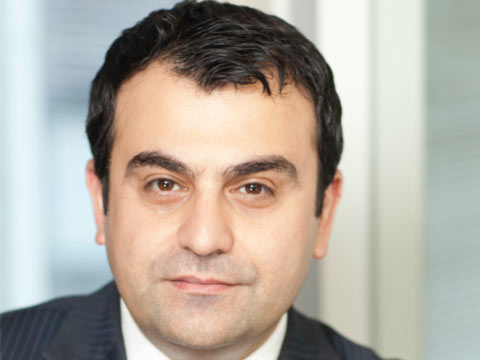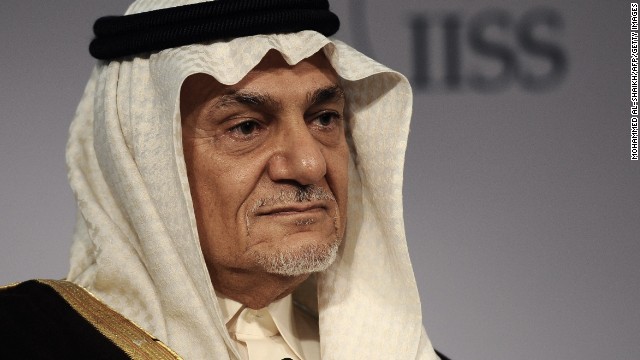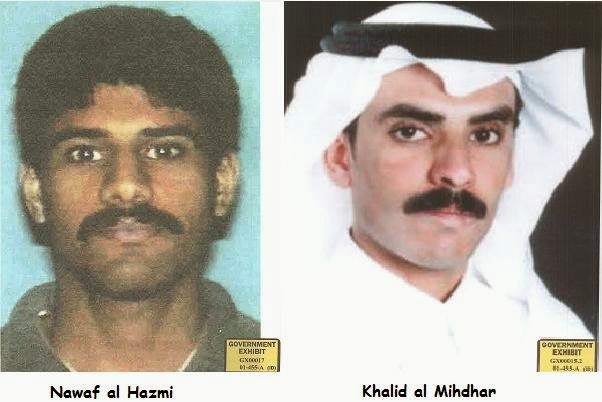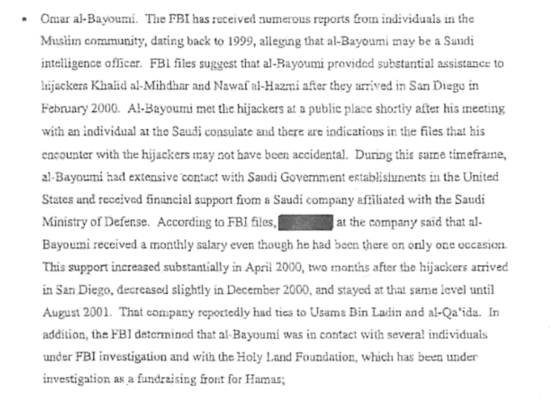For 15 years, questions about what really transpired in the run up to the 9/11 attacks on the Pentagon and World Trade Center have been asked and left unanswered. Unfortunately, these questions left hanging in the air have both led to a lack of accountability for the failures that resulted in the 9/11 attacks and have also given rise to a cottage industry of conspiracy theories regarding over-the-top dark and sinister plots in smoke-filled rooms.
You’ve heard these theories before, ranging from nonsense about holographic airplanes to conspiracies by our government to invent artificial wars. This article is not about conspiracy theories, but rather examines whether or not incompetence within our intelligence community contributed to the failures leading to the 9/11 attacks.
Unlike the recent rash of terrorist attacks across the United States and Europe, which at best were inspired by ISIS and executed by lone wolves who became remotely radicalized in place, 9/11 was a fairly sophisticated and elaborate plot that involved high-level meetings between terrorists, extensive planning, overseas financial transactions, the infiltration of a terrorist network into the United States, flight training to prepare for the hijackings, and a simultaneous execution of the hijackings on multiple airplanes.
The more extensive the terrorist network, the more moving parts there are in the plot, the more opportunities there are for the intelligence community and law enforcement to uncover the attack before it happens. New information leads one to believe that this could have been possible.
Richard Clarke, George Tenet, and Cofer Black
Richard Clarke has served as a counterterrorism advisor and member of the National Security Council (NSC) for multiple presidential administrations. On 9/11, he was President George W. Bush’s special advisor and later became his advisor on cyber security before parting ways with the administration in 2003. In interviews conducted over a number of years, Clarke described his experiences in the White House before, during, and after the 9/11 attacks.

According to Clarke, George Tenet, the then-Director of Central Intelligence (DCI); Cofer Black, who was running the CIA’s Counterterrorism Center; and Richard Blee, who was in charge of the Bin Laden station; all took counterterrorism very seriously and were very aware of the threat that al-Qaeda posed to U.S. national security. One of their main prerogatives was to acquire sources within the al-Qaeda network.
In 2000, the CIA became aware that al-Qaeda was holding a meeting to plan future strategy and attacks in Kuala Lumpur, Malaysia. They assigned personnel to follow the participants, which included Khalid Al Mihdhar and Nawaf Al Hazmi, who would later hijack Flight 77—the aircraft that was crashed into the Pentagon. The CIA lost track of them in Bangkok, Thailand, the two terrorists popping back up on their radar when they hit the ground in Los Angeles. In an interview, Clarke says that at least 55 CIA personnel were aware of this fact and a CIA inspector general report confirms this assertion.
https://www.youtube.com/watch?v=IzP9YJpBubk
Clarke would receive over 100 emails a day from the CIA updating him on situations such as this, and he also held daily phone calls with George Tenet to discuss various intelligence matters. For some reason, the information about Hazmi and Mihdhar never reached the White House advisor. “We therefore conclude that there was a high-level decision made within the CIA not to share the information,” Clarke said. How these two known al-Qaeda operatives obtained visas to enter the United States remains unknown, and the CIA reportedly did not share information that they had arrived in America with the National Security Council.
In the same interview, Clarke describes what he believes is the only possible explanation for why the information was not shared with other agencies. He states that when Cofer Black took over the Counterterrorism Center, he was shocked to discover that the CIA did not have any sources within al-Qaeda.
“I can understand them perhaps seeing these two guys showing up in the United States and thinking, ‘Aha, this is our chance to flip them, this is our chance to get guys inside AQ and due to that, we can’t tell anyone outside of the CIA,’” Clarke said, adding that if they had told the FBI, the bureau would have wanted to recruit them as their own assets. The CIA’s agenda would have been to flip Hazmi and Mihdhar in California, and then send them back to the al-Qaeda network overseas to work as intelligence assets.
Some would dismiss Richard Clarke’s suggestion as merely engaging in unfounded speculation, or perhaps making these statements for political reasons. However, documentaries produced by The New Yorker magazine and the BBC feature two FBI liaison special agents to the CIA during the 9/11 attacks who tell a story very similar to the one that Clarke outlines.
FBI Agents Ali Soufan, Doug Miller, and Mark Rossini
Ali Soufan was an FBI special agent assigned to interrogate al-Qaeda suspects before and after 9/11. As a Lebanese-American fluent in Arabic, he established a name for himself at the FBI as one of their more effective interrogators. After the USS Cole bombing in October of 2000, Soufan was assigned as an investigator. While in Yemen, the local intelligence agency allowed Soufan to question Fahd al-Quso, who told them that Khalid Sheik Muhammad (or KSM, later to be discovered as the mastermind behind 9/11) ordered Quso and one of the suicide bombers who attacked the Cole to transfer $36,000 from Yemen to Southeast Asia.
“We were able to track them to Malaysia and to Kuala Lumpur,” Soufan said in an interview with The New Yorker. “We asked the CIA: ‘Do you know anything about a meeting that took place in Southeast Asia,’” Soufan continued as he inquired about the meeting that took place before the Cole bombing. “We put this request up three times…the answer was no.” This, of course, is the same high-level al-Qaeda meeting that Clarke referenced, the one that the CIA did know about and, by his account, had people on the ground attempting to tail some of the participants.

The CIA learned that participating in the terrorist meeting in Malaysia was the previously mentioned Mihdhar and Hazmi, along with KSM, Riduan Isamuddin, Yazid Sufaat, and Razmi bin al-Shibh. This information was kept from other agencies, including an FBI liaison to the CIA’s Bin Laden Task Force (nicknamed Alec Station) named Mark Rossini, who worked closely with another FBI liaison there named Doug Miller.
The New Yorker went further, reporting that the CIA broke into Mihdhar’s hotel room in Dubai at a later date and found his passport, with his prearranged visa for entry into the United States. Rossini recalls how Doug Miller wrote a cable about this event to send to his colleagues in the bureau, which would inform them that a known al-Qaeda operative was about to arrive in the United States. A CIA officer prevented that cable from being sent, telling Rossini “No, not gonna send it.” When he asked why, she replied, “Because it’s a CIA matter.”
Hazmi and Mihdhar arrived in Los Angeles about a week after their meeting with KSM in Malaysia, still a year and a half away from the 9/11 attacks. Both al-Qaeda operatives and the other hijackers who were infiltrating onto American soil traveled under their real names, made phone calls to known al-Qaeda figures in Yemen, interacted with Saudi governmental officials, and used credit cards without any attempt to conceal their identity.
What did the NSA know before the 9/11 attacks?
Thomas Drake is a whistleblower who previously worked for the National Security Agency. It should be noted that Drake actually had whistleblower status with Congress, as he reported real or perceived misdeeds through the appropriate channels within the intelligence community such as the NSA’s inspector general. This is far different than so-called “whistleblowers” like Edward Snowden, who steal classified documents and then defect to China and Russia.
For his efforts in reporting fraud, waste, and abuse, Drake was indicted for 10 charges of allegedly mishandling classified material, all of which were later dropped.

In an interview, Drake was asked about Michael Scheuler’s request to the NSA for phone logs pertaining to a satellite phone used to place phone calls to Osama Bin Laden, traced to Yemen. Drake confirmed that the NSA stonewalled Scheuler, but that this was the least of it.
“I live with the dirty knowledge of what could have been, and what could have been is that 9/11 could have been prevented by virtue of what the NSA alone knew…it is one of the deep, dark chapters in post-9/11 and pre-9/11 history that has yet to be fully written…and it [NSA] went into a major cover-up,” Drake elaborated.
According to Drake, the NSA director was more than happy to let the FBI and CIA take the heat from the 9/11 Commission while the National Security Agency remained in the shadows.
Omar al-Bayoumi and Prince Turki al-Faisal
Once in Los Angeles, a Saudi national named Omar al-Bayoumi made the acquaintance of Hazmi and Mihdhar, going on to provide them with housing and financial support. “Some believe that Bayoumi was a Saudi intelligence officer,” Richard Clarke said, going on to mention that there was a strong relationship between George Tenet and Saudi intelligence chief Prince Turki Al-Faisal, and that the CIA may have been using the Saudi intelligence as a proxy to recruit assets inside al-Qaeda. Prince Turki al-Faisal served as the head of Saudi intelligence from 1979 until 2001, resigning his post 10 days before the 9/11 attacks.

Whether Hazmi and Mihdhar were recruited as intelligence assets remains unknown, but finally, in August of 2001, just weeks before the 9/11 attacks, the CIA decided to tell the FBI that they knew two al-Qaeda operatives were in America. Why the CIA waited a year and a half to tell the FBI is also unknown, and one can only speculate that they realized Hazmi and Mihdhar may have been double agents who never really flipped to begin with.
A week prior to 9/11, a high-level meeting was held at the White House to discuss terrorist threats. Although the CIA had told low-level FBI agents about Hazmi and Midhar, they failed to disclose this information at the principals meeting that day. If they had, Clarke says they then would have had to explain why they had hidden this information from the rest of the government for a year and half.
The recruitment of intelligence assets, and protecting the nature of those sources, is all well within the CIA’s purview. Contrary to popular belief, it is not illegal for the CIA to operate on American soil. For the CIA to recruit foreign nationals as intelligence assets and send them back overseas to spy for Uncle Sam is perfectly lawful, however, there are rules for coordination with the FBI so that these agencies do not step on each other’s feet. If the case laid out by Clarke, Soufan, and Rossini is correct, these rules were not followed.
John O’Neill versus Michael Scheuer
The FBI and the CIA have radically different missions that converge around certain issues such as counterintelligence and counterterrorism. Although these two institutions are both critical to American national defense, difficulties arise when they have to work together. FBI agents join the bureau to investigate criminals and make arrests. CIA officers are tasked with identifying, grooming, and recruiting intelligence assets over long periods of time. Considering this, it is of little surprise that friction can arise between the FBI and CIA.

John O’Neill was one of the FBI’s more colorful characters. Despite looking like an Italian mobster, he had been interested in becoming an FBI agent from the time he was a child. Working his way through the ranks, O’Neill developed a reputation for effectively carrying out terrorism investigations, but he also made many enemies, as some felt he was abrasive and too interested in furthering his own career. While O’Neill was running the FBI’s Counterterrorism Center, Richard Clarke helped put him on the trail of Ramsey Yousef, who was behind the 1993 World Trade Center bombing. Despite his successes, he also had a checkered record, including allegations of multiple mistresses, misappropriating a U.S. government vehicle, and losing track of a briefcase containing classified information.
At the CIA, Michael Scheuer was one of his agency’s more interesting and controversial figures. In the past, he has been described as being both brilliant and ruthless. During the late 1990s, he headed up Alec Station (the CIA’s Bin Laden unit) and served as an advisor to it in 2001. While at Alec Station, he met a CIA officer named Alfreda, and the two were married years later. Alfreda is the woman that Jessica Chastain’s character in “Zero Dark Thirty” was based upon.

Both Scheuer and O’Neill were essentially forced into retirement. O’Neill learned his rivals in the FBI were leaking stories to the press about some of his improprieties, and decided to retire rather than be passed over for promotion again. Scheuer resigned from the CIA in 2004 after it became known that he had anonymously authored a book titled “Imperial Hubris,” which criticized America’s relationship with Israel.
The tension between Scheuer and O’Neill as they attempted to cooperate (or not cooperate, as the case may be) on issues related to al-Qaeda while at the CIA and FBI, respectively, sounds almost legendary. The animosity was so great that, in testimony before Congress, Scheuer said that the only good thing about 9/11 was that the Twin Towers fell on O’Neill’s head. On 9/11, O’Neill had been working there as head of security after retiring from the FBI. “Mr. Clarke and Mr. O’Neill, in my view, [are the] two principal authors of September 11,” Scheuer wrote.
In one sense, a part of the failures leading up to 9/11 can be laid at the feet of these institutional rivalries and cliques within competing agencies. On one side you have Scheuer, Alfreda, Blee, and perhaps to a lesser extent, George Tenet. On the other side you have O’Neill, who was very close to Ali Soufan, and who allegedly sent Mark Rossini to be the FBI’s liaison to the CIA in order to keep tabs on the agency’s activities and report back to him.
Both the FBI and CIA were distracted by numerous other potential threats and responsibilities in the run up to 9/11, but could the attacks have been prevented if not for a world-class pissing contest between the good old boy’s clubs of our primary intelligence-gathering agency and our primary federal law enforcement bureau?
After 9/11
After the attacks on the Pentagon and World Trade Center, Soufan was handed a large envelope “that included all the details of what happened in Southeast Asia. All the information was there, plus surveillance photos.” Soufan remembers that after he saw this information and realized that we had all of the information to have been able to prevent 9/11, he ran to the bathroom and vomited. “I just couldn’t function. My brain was just…I didn’t know what to do. I didn’t know what to say,” Rossini said.
Rossini then went to his boss and informed him that the CIA knew about some of the hijackers and that Miller had written a cable about it that was denied back in January. Initially in denial, his supervisor said that if it isn’t in paper, it doesn’t exist. “Here, Jim, read it,” Rossini said, dropping the unsent cable on his desk.

As for the CIA officer who refused to share this information with the hijackers, Soufan said, “Unfortunately, her name is classified. That is how we protect people in America. We classify information.” Revealing the name of a CIA official placed under a cover is a violation of U.S. federal law. Michael Scheuer’s wife, Alfreda, has been reported to have withheld information about the 9/11 hijackers from the FBI, and may very well be the female CIA officer that Ali Soufan was unable to name publicly for legal reasons.
The CIA maintains that they passed on this information to the FBI. In a statement to 60 Minutes, the CIA wrote that any accusation that the agency did not share such information is “baseless,” and that “these allegations diminish the hard work and dedication of countless CIA officers.” Soufan disputes this, stating that the 9/11 Commission Report and the agency’s Office of Inspector General report say otherwise.
“If they had, even as late as September 4th, told me, we would have conducted a massive sweep,” Clarke said. “We would have conducted it publicly. We would have found those assholes.”
The Saudi connection: The 28 pages of the 9/11 Commission Report
With the recent declassification of 28 pages from the 9/11 commission report, we have a supporting document that backstops many of the claims made by Richard Clarke. The papers are worth reading in full, as they describe how the 9/11 hijackers—Hamzi and Mihdhar in particular—had Saudi intelligence operatives swarming around them. Furthermore, the money trail supporting terrorist networks traces right back to the Saudi royal family itself.

In regards to Omar Al-Bayoumi, the alleged Saudi intelligence agent who Clarke says met with Hamzi and Mihdhar, the declassified portion of the 9/11 commission report states:

Al-Bayoumi’s ties to the Saudi government are quite extensive:

The documents also point toward another Saudi, named Osama Bassnan, who lived across the street from the two future 9/11 hijackers in San Diego. Bassnan was also an alleged Saudi intelligence agent, according to FBI sources, and a CIA memo outlined how he received funding and maybe even a fake passport from the Saudi government. He also had ties to the Saudi royal family, and like so many Saudi government officials swirling around the 9/11 hijackers, appears to have received a regular stipend from the Saudi monarchy.
Al-Bayoumi, despite not holding down a job, received such a stipend, which increased once Hamzi and Mihdhar arrived—rising from $465 a month to $3,700 a month. The monthly payment then decreased to $3,200 when Hamzi left San Diego and continued until Al-Bayoumi fled back to Saudi Arabia, just a month before the 9/11 attacks. Bassnan was receiving money directly from the wife of Prince Bandar, the Princess Haifa Bin Sultan. At the time, Prince Bandar was the Saudi ambassador to the United States.
In the world of espionage, there are action agents and support agents. Hamzi and Mindhar were al-Qaeda action agents who would execute the terrorist attack. Al-Bayoumi and Bassnan were support agents, forming the greeting party for the action agents when they arrived and providing logistical support for the 9/11 attack.
Saudi diplomat Shaykh al-Thumairy was also suspected of having connections to Hamzi and Mihdhar. An employee of the Saudi interior ministry named Saleh al-Hussayen stayed at the same hotel as the two hijackers in Herndon, Virginia, but claimed he did not know them during an FBI interview. While being questioned by the FBI, al-Hussayen faked an epileptic episode and had to be hospitalized. He then fled the country before the FBI could re-interview him. It is also important to recall that Prince al-Faisal, the Saudi intelligence director, resigned just 10 days prior to the 9/11 attacks after serving in that post since 1979. What did he know was coming?
Richard Clarke’s statement that two of the 9/11 hijackers were meeting with Saudi intelligence agents appears to be confirmed by the 9/11 commission report documents. However, his belief that the CIA was using the Saudis as proxies to recruit assets within al-Qaeda is, as of yet, unverified.
Lost to history
What really happened on 9/11 is probably already lost to history. The fact that the Saudi connection to the 9/11 hijackers was kept classified until 2016 tells us that straightaway. Had that information been public, the narrative used to buttress the War on Terror would be very different. For starters, many Americans would have been wondering why we were not invading Saudi Arabia instead of Iraq and Afghanistan.
If the CIA was in fact trying to recruit several Saudi al-Qaeda operatives as intelligence assets, right under the nose of the FBI, no one is going to be forthcoming with that information today. “Look at it this way,” Richard Clarke said, “they’ve been able to get it through a joint house investigation committee and get through the 9/11 commission, and this has never come out. They got away with it.”
Today, the 9/11 narrative is set in stone, and Americans are allergic to any questioning of it after being bombarded by conspiracy theory “activists” who spin wild stories about how the CIA and George Bush conspired to bring down the World Trade Center with a controlled demolition, or how a plane never even crashed into the Pentagon.
Whatever the case, Americans do need to know what really happened on 9/11 without the conspiracy theories, without the political spin, and without anyone softening the edges for us.










COMMENTS
You must become a subscriber or login to view or post comments on this article.